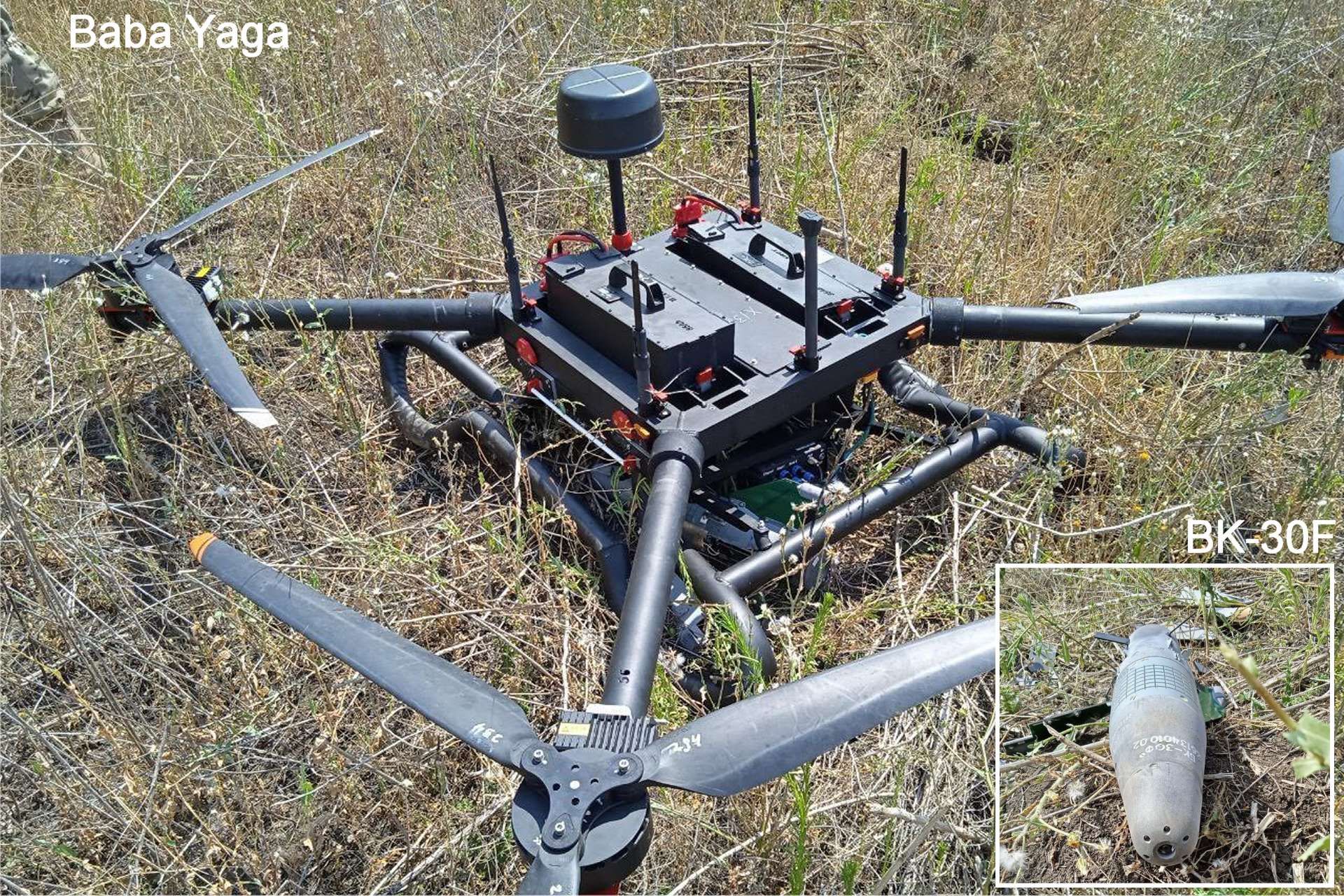Breaking News
Russia Intercepts a BK-3OF Guided Bomb Mounted on a Ukrainian Baba Yaga Drone.
Russian forces have intercepted a Ukrainian BK-3OF, a highly explosive fragmentation charge mounted on an unmanned combat aerial vehicle (HE-Frag UCAV). This sophisticated weapon, part of Ukraine's advanced military arsenal, was intercepted during an operation.
Follow Army Recognition on Google News at this link

Ukrainian BK-3OF, a highly explosive fragmentation charge mounted on a Baba Yaga unmanned aerial vehicle. (Picture source: Social Media)
Images of a Baba Yaga captured by Russian forces have emerged on Telegram. They show the Baba Yaga adorned with largely intact antennas, as well as a very peculiar munition, equipped with a seeker head seemingly designed for laser guidance, although other possibilities exist, including an electro-optical type. The weapon is marked BK-30F in Cyrillic and appears to have a large fragmentation warhead section occupying the middle of its body.
The BK-3OF is an air-dropped guided bomb, designed for maximum efficiency in targeting infantry positions and lightly armored vehicles. It uses a highly explosive fragmentation warhead (HE-Frag), known for its effectiveness against personnel and lightly armored targets. The BK-3OF is a variant of the RK-3OF warhead, itself derived from the RK-3 Korsa missile – a laser beam-riding anti-tank guided missile (LBR ATGM) designed to penetrate heavy armor and fortified structures.
Pairing weapons like this with Baba Yaga drones makes sense. These unmanned craft are not cheap or disposable weapons like their first-person view (FPV) counterparts. They are industrial-grade systems often used for agricultural and commercial purposes. They cost tens of thousands of dollars each and can carry significant payloads over dozens of kilometers. Thus, while increasing their lethality is always important, enhancing their survivability is equally crucial.
The Baba Yaga, like other drones in the Ukrainian arsenal, is essential to their strategy of leveraging unmanned systems to conduct reconnaissance missions and precise strikes. These drones can hover over the battlefield, providing real-time intelligence and delivering munitions with great precision.
Ukraine has rapidly advanced its drone technology. Recently, a significant batch of 830 FPV drones equipped with various munitions, including HE-Frag warheads, was provided to Ukrainian forces by the Come Back Alive Foundation. These drones are designed to disrupt enemy infantry movements and destroy long-range targets, thereby enhancing the tactical capabilities of the Ukrainian army.
Moreover, the country's defense industry has actively developed other advanced systems, such as the Phoenix 03 Heavy and the RAM UAV, which offer capabilities like low observability, autonomous flight, and multi-role munitions.
Even if they are not equipped with rocket motors and are only used in free-fall mode, guided munitions would allow Baba Yaga drones to engage targets from much higher altitudes without having to stay directly above the target they are attacking. The drones can then continue to move during the engagement, significantly increasing their survivability.

Image of the Ukrainian Baba Yaga captured by Russian forces. (Picture source: Social Media)


























